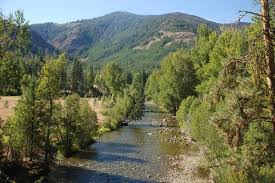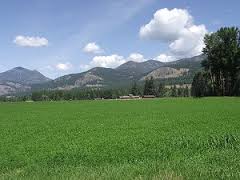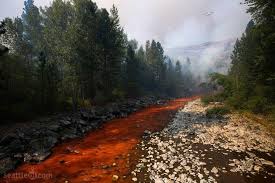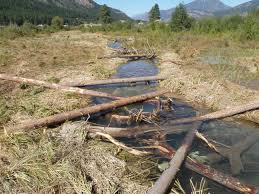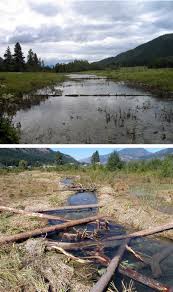Ecological Studies in the Twisp River of Washington State
Since 2010, Invertebrate Ecology has been working with the Confederated Tribes and Bands of the Yakama Nation to inventory and characterize site conditions in the Twisp River of Eastern Washington. Tribal biologist have regularly collected benthic macroinvertebrate samples from a series of sites in the river, while IE has performed all taxonomic identifications for them. For hundreds of thousands of specimens, IE has provided not only identifications and diversity metrics but also length measurements, biomass and secondary production estimates. Invertebrate Ecology maintains up-to-date regionally specific mass-length regression models for estimating biomass and has expertise with the application of size-frequency models for estimating secondary production.
Invertebrate Ecology always notifies it’s clients when rare or interesting organisms have been identified in their samples, and, should they choose to do so, helps them to publish such findings in the scientific literature. For example, while working for the Yakama, IE identified a very rare aquatic fly species (Oreoleptis torrenticola) from a handful of samples. This species is so rare that it has only been described within the last 10 years! With the Yakama’s support, IE led a publishing effort and now a paper on our findings is available in the Western North American Naturalist 73 (2): 237-239.
Hancock Springs – Natural Production Restoration Project
Hancock Springs is a perennial stream that outlets into the Twisp River of Eastern Washington. Within the last few years, John Jorgensen (Yakama Tribal Biologist) has led an effort to restore the upper reach of the stream, altering the stream channel to create pool-riffle features and adding logs and debris create within stream habitat.
As with the Twisp River, Invertebrate Ecology has been assisting Yakama Biologists with taxonomic identifications of macroinvertebrates from the restored and downstream reaches of Hancock, and also with biomass and production estimates for them. Macroinvertebrates are a critical food resource for most salmonid fish species, and non-salmonids, and are known to be responsive to restoration efforts (Kail et al. 2015) and also to nutrient additions (Minshall et al. 2014) as shown in other studies. Thus, it is critical to understand how restoration and nutrient additions will influence this basal resource in order to quantify bottom-up effects on fish and the aquatic food web.
References
Kail, J., K. Brabec, M. Poppe, and K. Januschke. The effect of river restoration on fish, macroinvertebrates and aquatic macrophytes: A meta-analysis, 58: 311-321.
Minshall, W., B. Shafii, W.J. Price, C. Holderman, P.J. Anders, G. Lester and P. Barrett. 2014. Effects of nutrient replacement on benthic macroinvertebrates in an ultraoligotrophic reach of the Kootenai River, 2003–2010. Freshwater Science 33: 1009-1023.
Assessing the Sensitivity of Macroinvertebrate and Fish Indexes of Biotic Integrity (IBI) to Measure Site Conditions in the Kootenai River of Montana and Idaho
Invertebrate Ecology (IE) provided assistance to Biologists Norm Merz and Charlie Holderman with the Kootenai Tribe of Idaho to assess the sensitivity of the River Macroinvertebrate IBI “RMI” (Royer et al. 2001, Grafe 2002) and the Fish IBI for the Pacific Northwest (Mebane et al. 2003) to site conditions in the Kootenai River downstream of Libby Dam, Montana. In this effort, Tim Hatten (PhD Entomologist, IE) teamed with Paul Anders (PhD Scientist, Cramer Fish Sciences) and Marc Evans (PhD Statistician, Washington State University) to rank and score a series of sites with these multimetric indexes. The RMI showed an impressive level of sensitivity to sites and nutrient addition regions in the river, while the Fish IBI showed promise as well (Anders and Hatten 2013).
References
Anders, P. and T. Hatten. 2013. Fourth Order Impacts: Aquatic Index of Biological Integrity pp. 164 – 224 In Kootenai River Ecosystem Operational Loss Assessment. Kootenai River Floodplain Ecosystem Operational Loss Assessment, Protection, Mitigation and Rehabilitation (BPA Project Number 2002-011-00). Bonners Ferry, ID.
Grafe, C.S. 2002. Idaho river ecological assessment framework: an integrated approach; Idaho Department of Environmental Quality; Boise, ID.
Mebane, C.A., T.R. Maret, and R.M. Hughes. 2003. An index of biological integrity for Pacific Northwest Rivers. Transactions of the American Fisheries Society 132:239-261.
Royer, T.V., C.T. Robinson, and G.W. Marshall. 2001. Development of macroinvertebrate-based index for bioassessment of Idaho rivers. Environmental Management 27:627-636.
Stream and Estuarine Bioassessment Studies
Invertebrate Ecology has provided -or continues to provide- laboratory and analytical assistance to the Spokane Tribe of Indians of Washington, the Confederated Tribes of the Siletz Indians of Oregon, and the Shoshone-Bannock Tribes, to describe the benthic macroinvertebrate fauna of rivers and streams in their regions. State and Federal agencies are relying increasingly on biotic measures of integrity for assessing compliance with water quality standards, hence one of the
emphases for tribes and other organizations is to conduct aquatic bioassessment in their watersheds. Invertebrate Ecology can also provide laboratory assistnace with periphyton (Diatoms and soft algae) as we are for the Shoshone-Bannock of Idaho.
For the Siletz, Invertebrate Ecology is also providing laboratory assistance with the identification of estuarine-macroinvertebrates and statistical analysis of site conditions.
Developing Regionally-Specific Mass-Length Regression Coefficients
In development…





